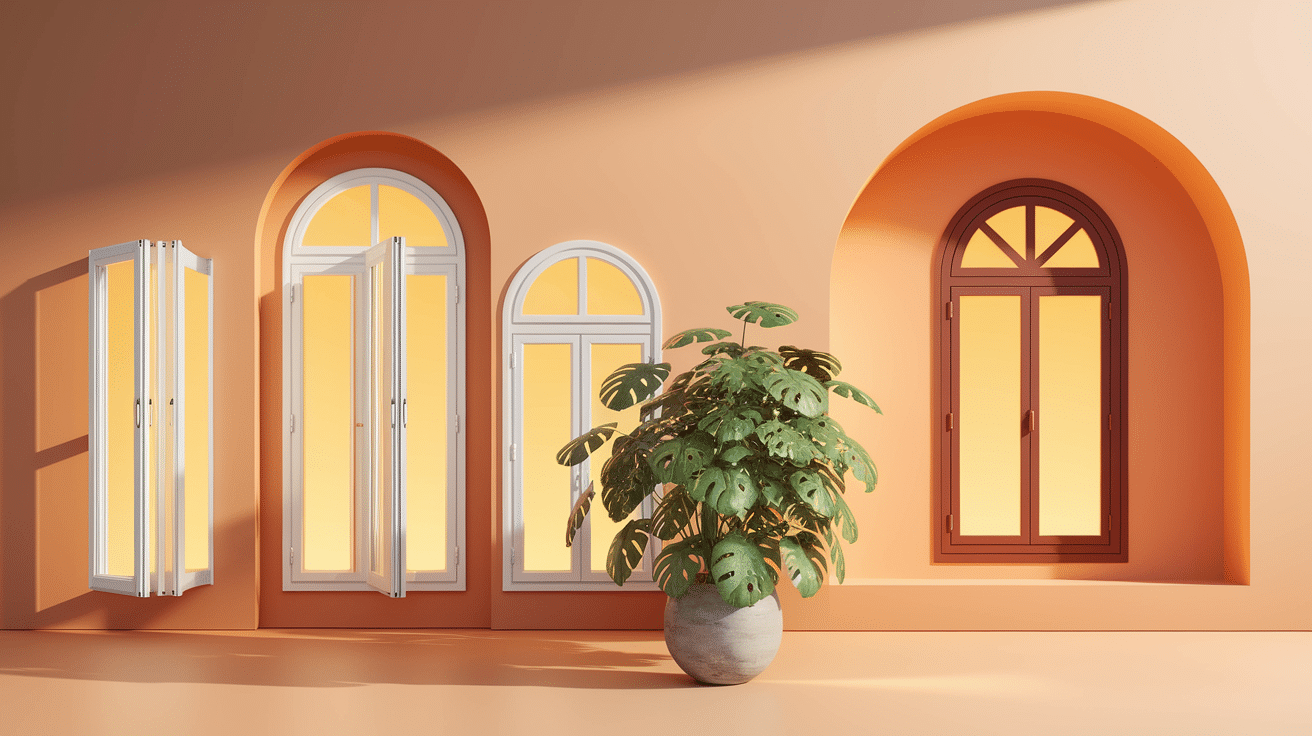Windows do so much more than just let light into your home. They control airflow, affect your energy bills, and play a significant role in determining the appearance of your house, both inside and out.
The right windows can make a small room feel bigger, keep your home comfortable year-round, and even increase your property value.
With numerous window styles available, selecting the right ones can be overwhelming. Each type has its benefits and drawbacks, and what works great in one room might not be the best choice for another.
In this guide, you will get to know about seven popular window types that work well in most homes.
You’ll learn about the pros and cons of each style, as well as get tips on which rooms they work best in. By the end, you’ll know exactly which windows are right for your specific needs and budget.
Types of Windows for Your Home
Each window type has its personality and purpose. Some are built for maximum airflow, others for surreal views, and some focus on being budget-friendly and practical.
Understanding what makes each style unique will help you match the right windows to the right rooms in your home.
1. Single-Hung Windows
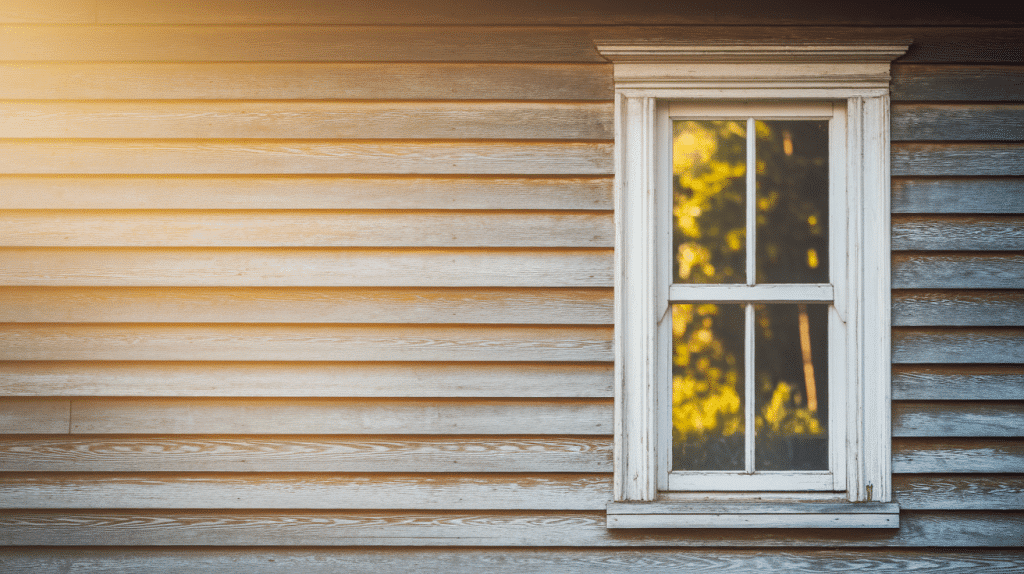
Single-hung windows are probably the most common type you’ll see in homes. These windows have two parts (called sashes), but only the bottom part moves up and down.
The top stays in place. They’re simple, affordable, and work well in many different rooms.
| Pros | Cons |
|---|---|
| Very affordable option | Only the bottom half opens for airflow |
| Easy to maintain and repair | Hard to clean the outside of the top part |
| Classic look that fits most home styles | Limited ventilation compared to other types |
| Takes up minimal space inside and outside | Air only flows through the bottom opening |
Best for: Bedrooms, hallways, guest rooms, or any space where you need windows but don’t require maximum airflow.
2. Double-Hung Windows

Double-hung windows look similar to single-hung, but both the top and bottom parts can move. This means you can open the window from the top, bottom, or both.
Many double-hung windows also tilt inward, which makes cleaning much easier.
| Pros | Cons |
|---|---|
| Both parts are open for better airflow | More expensive than a single-hung |
| Easier to clean (many tilt inward) | More parts that can break over time |
| Better ventilation control | Slightly larger frames |
| Can open the top for hot air to escape | Takes more effort to operate both sashes |
Best for: Living rooms, kitchens, bedrooms, and any room where you want good airflow control and easy cleaning.
3. Casement Windows
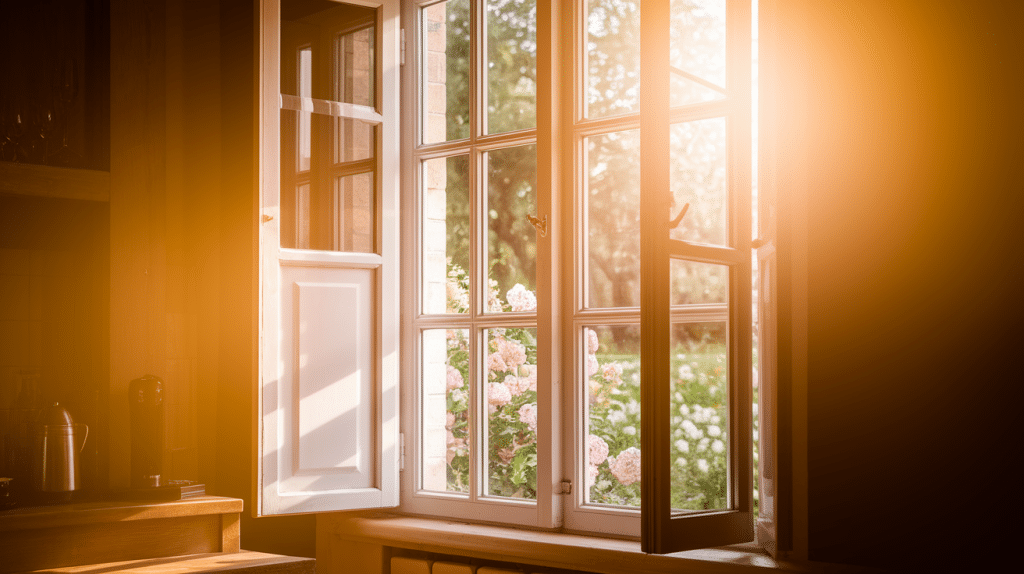
Casement windows open outward like a door, using a crank handle. When fully open, the entire window opening is clear, which means maximum airflow.
They also seal very tightly when closed, making them great for energy efficiency.
| Pros | Cons |
|---|---|
| Opens completely for maximum airflow | Harder to clean the outside |
| Very energy efficient when closed | Needs clearance space outside |
| Good security (locks at multiple points) | The crank handle can break |
| Easy to operate with a crank mechanism | Not suitable near walkways or patios |
Best for: Kitchens, bathrooms, laundry rooms, or anywhere you need lots of fresh air and don’t have obstacles outside the window.
4. Sliding Windows
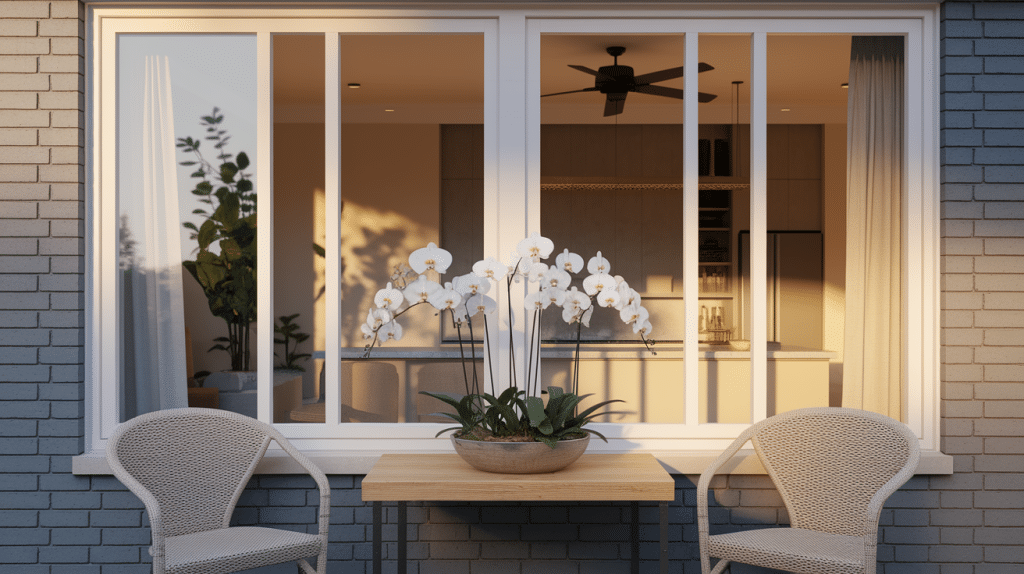
Sliding windows move sideways along a track, similar to a sliding patio door. Usually, one side stays fixed while the other slides open.
They’re simple to use and work great for wider wall spaces where you want a lot of natural light.
| Pros | Cons |
|---|---|
| Very easy to open and close | Only half the window opens |
| Great for wide wall spaces | It can be hard to seal completely |
| No parts sticking out inside or outside | The track can collect dirt and debris |
| Good for rooms with limited space | Limited airflow compared to full-opening windows |
Best for: Living rooms, dining rooms, patios, or any wide wall space where you want lots of light but don’t need maximum ventilation.
5. Awning Windows
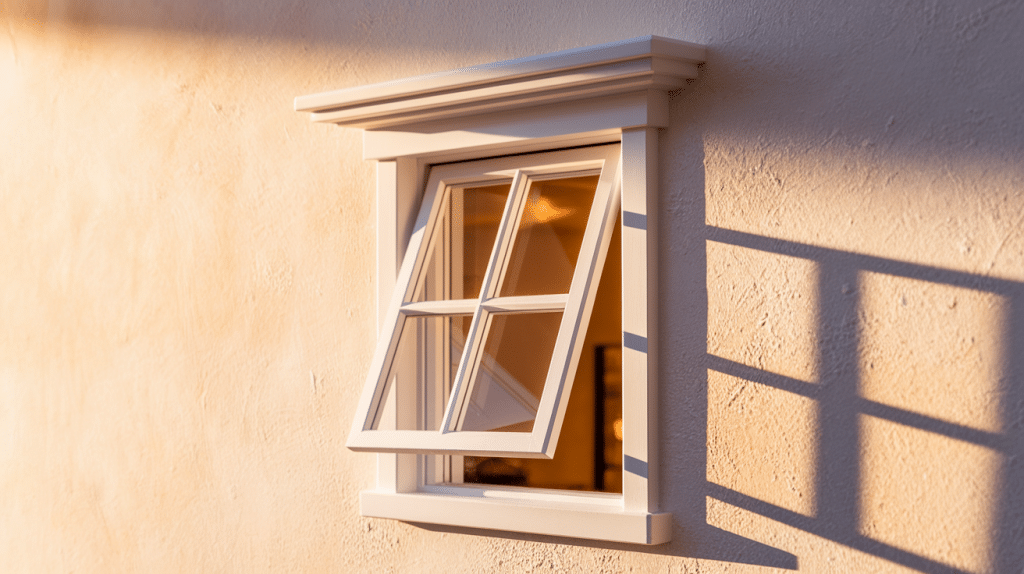
Awning windows are hinged at the top and open outward from the bottom. When open, they create a small awning or roof effect.
This design lets you keep the window open even during light rain, which makes it perfect for areas that need constant airflow.
| Pros | Cons |
|---|---|
| Can stay open during rain | Limited airflow when fully open |
| Good for privacy (opens at top) | Needs space outside to open |
| Energy-efficient sealing | It can be harder to clean outside |
| Works well in basements or high windows | Not ideal for emergency exits |
Best for: Bathrooms, kitchens, basements, or any room where you need ventilation but want protection from weather.
6. Picture Windows
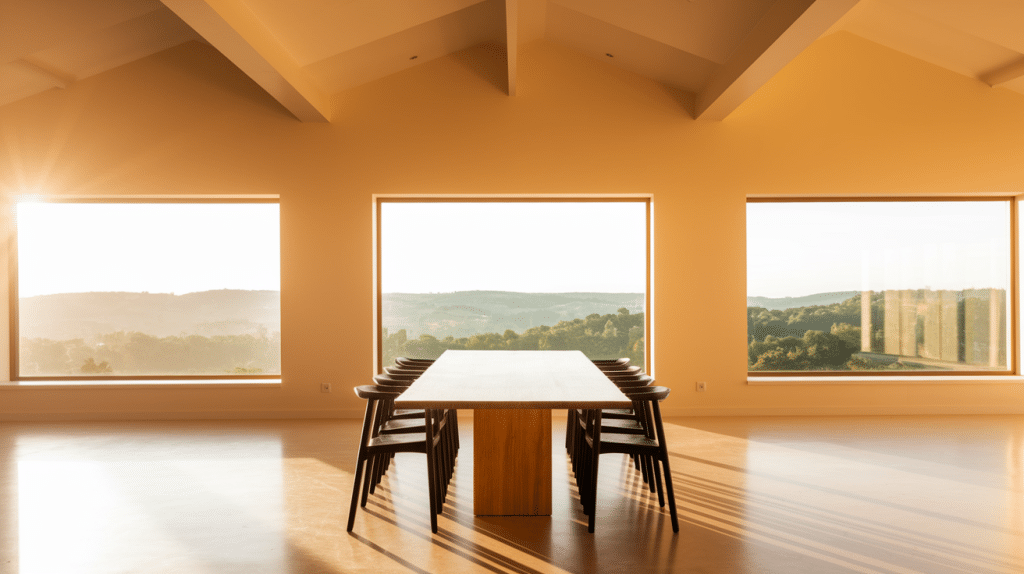
Picture windows are large, fixed windows that don’t open at all. They’re designed to provide unobstructed views and let in maximum natural light.
Think of them as big glass panels that frame the view outside like a picture.
| Pros | Cons |
|---|---|
| Maximum natural light | No ventilation at all |
| Unobstructed views | It can be hard to clean outside |
| Most energy efficient (no moving parts) | Large glass areas can be expensive |
| Creates dramatic focal points | No emergency exit option |
Best for: Living rooms, dining rooms, or any space with beautiful views where ventilation isn’t a priority.
7. Bay and Bow Windows
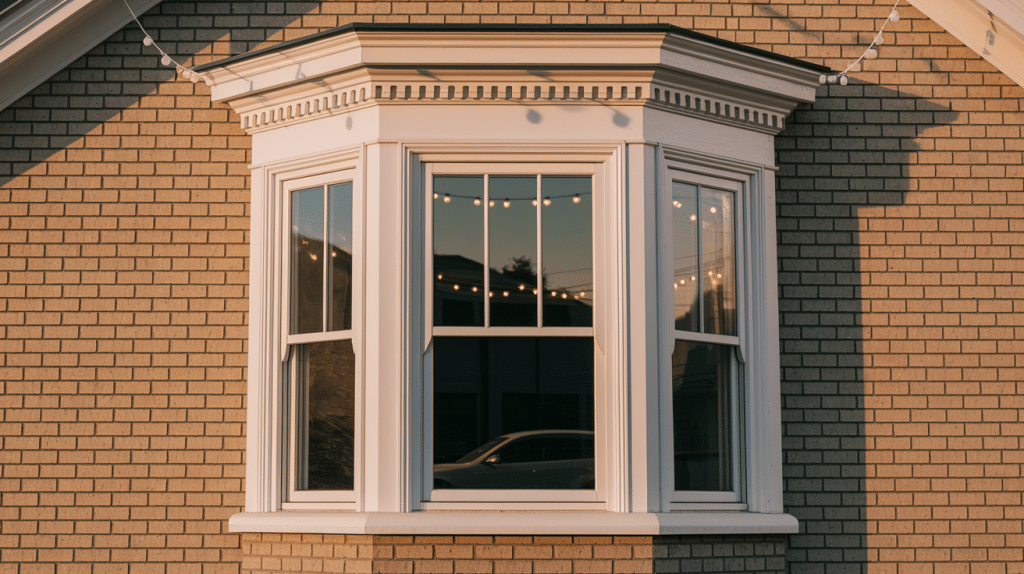
Bay and bow windows stick out from the wall, creating extra space inside your room.
Bay windows typically have three panels, while bow windows have four or more panels in a curved arrangement. They add both space and character to any room.
| Pros | Cons |
|---|---|
| Creates extra interior space | Most expensive window option |
| Adds dramatic architectural interest | Requires structural support |
| Multiple panels for ventilation options | More maintenance needed |
| Increases home value significantly | Complex installation process |
Best for: Living rooms, dining rooms, master bedrooms, or any space where you want to create a focal point and add usable space.
Choosing the Right Window for Your Home
Picking the right windows depends on three main factors: how you’ll use the room, what style you prefer, and your budget. Here’s how to think through each decision:
1. Consider the Room’s Purpose: Think about what happens in each room. Kitchens and bathrooms need good ventilation, so casement or awning windows work well.
2. Think About Your Climate: If you live somewhere with harsh weather, energy efficiency matters more. Casement windows seal tightly, while single-hung windows might let in more drafts.
3. Budget Considerations: Single-hung windows are the most budget-friendly, while bay and bow windows cost the most. Remember that spending more on energy-efficient windows often saves money on heating and cooling bills over time.
4. Maintenance Requirements: Some windows are easier to clean and maintain than others. If you don’t want to climb ladders to clean windows, choose styles that tilt inward or are easy to reach from the inside.
Making Your Final Decision
Choosing windows is a big decision that affects your home’s comfort, appearance, and value. Take time to consider each room individually rather than using the same window type throughout your house. A mix of different styles often works best.
Before making final choices, visit showrooms to see and operate different window types in person. This helps you understand how each style works and which ones feel right for your needs.
Don’t forget to get quotes from multiple contractors and check warranties carefully. The right windows will serve your home well for decades, so it’s worth taking time to choose wisely.
Consider your budget, think about how you use each room, and pick windows that match your lifestyle and home decor.
Start by measuring your current windows and getting quotes from local contractors to find the perfect match for your needs and budget.

